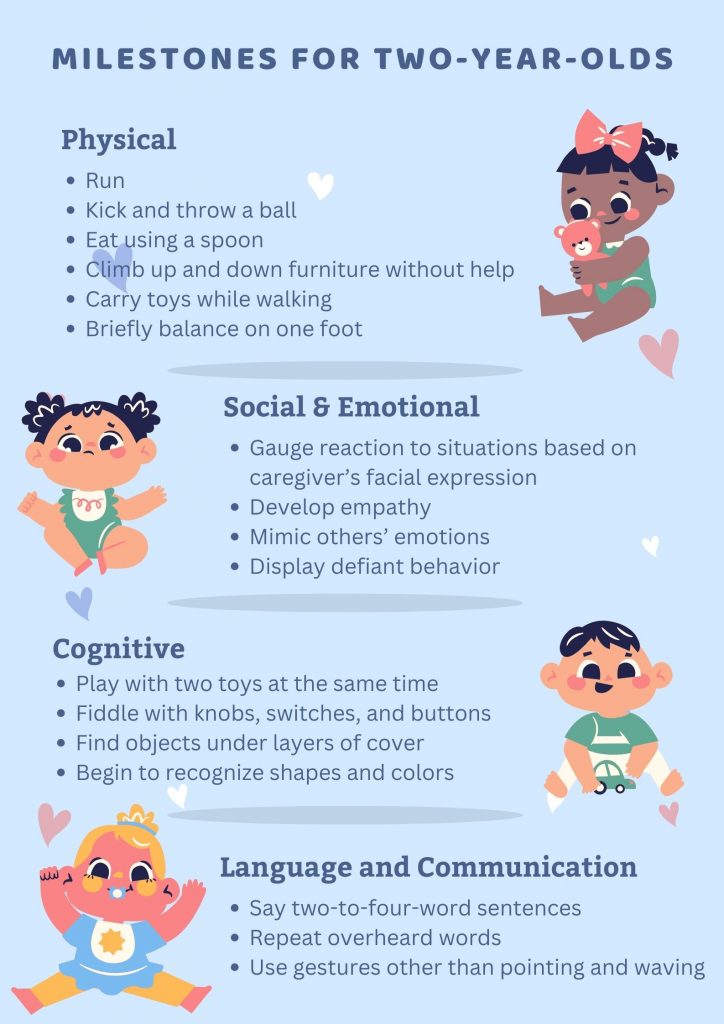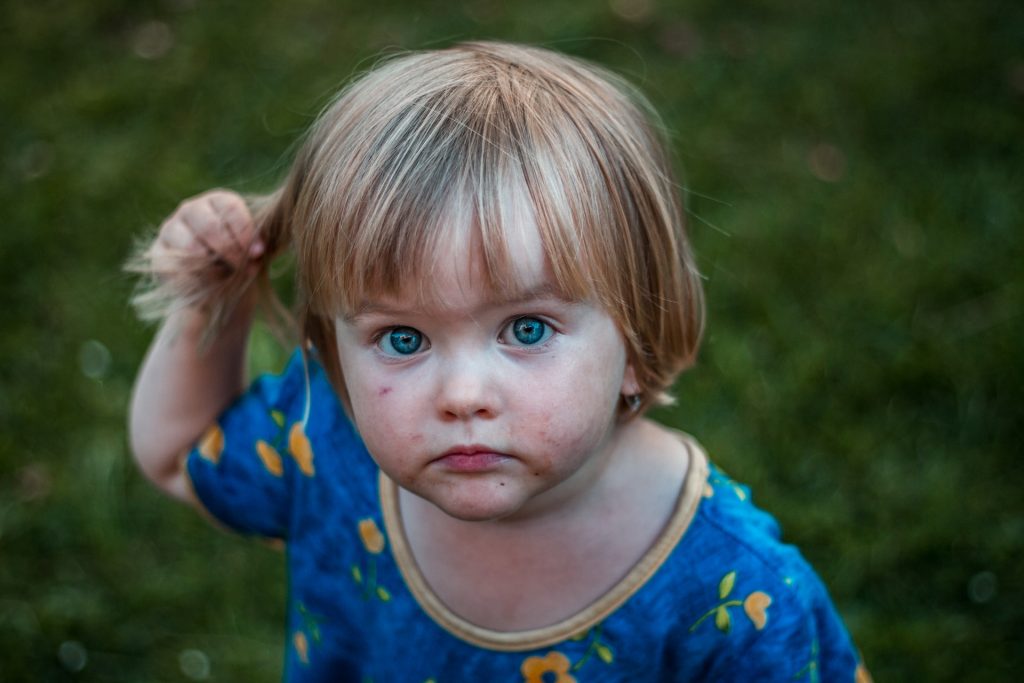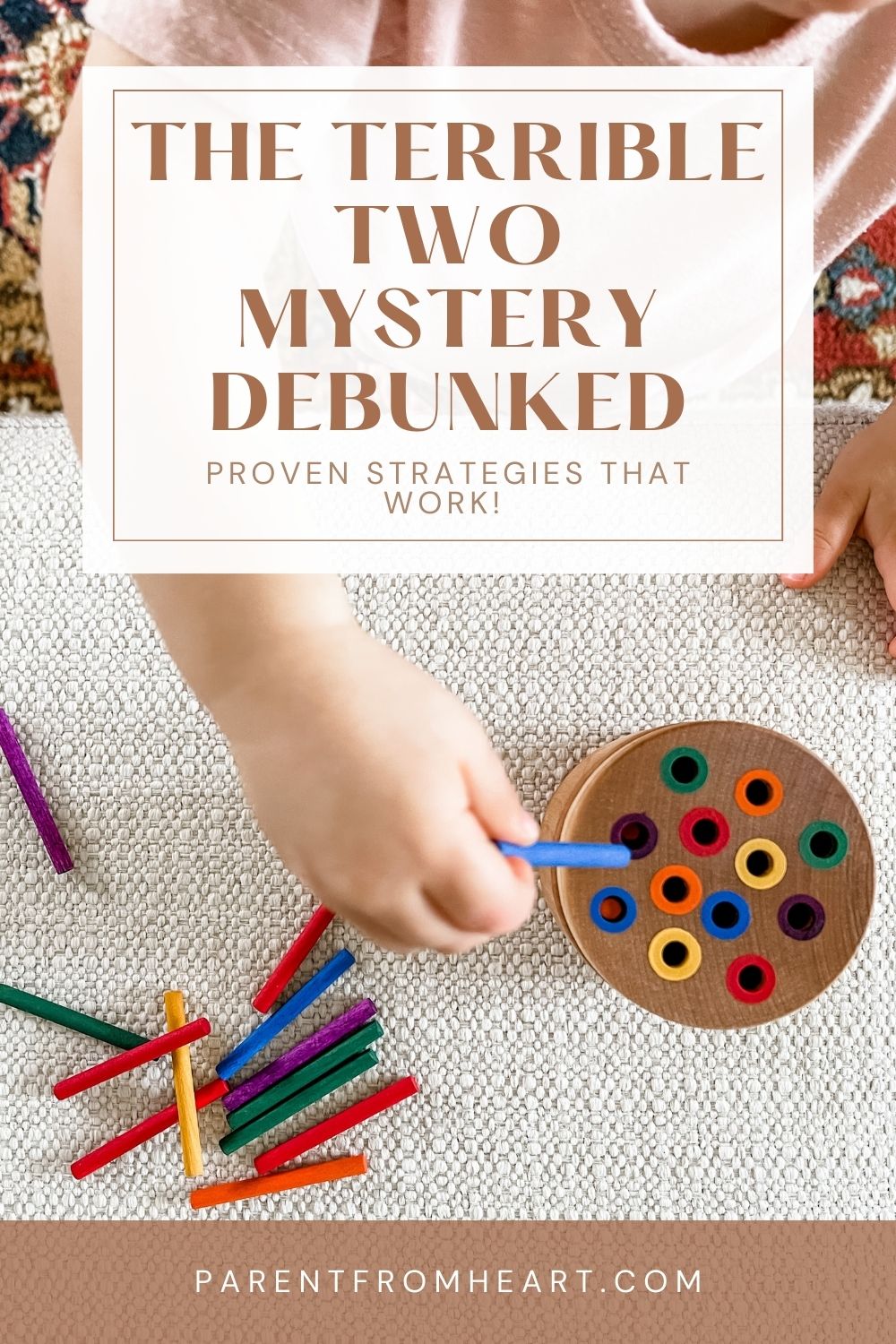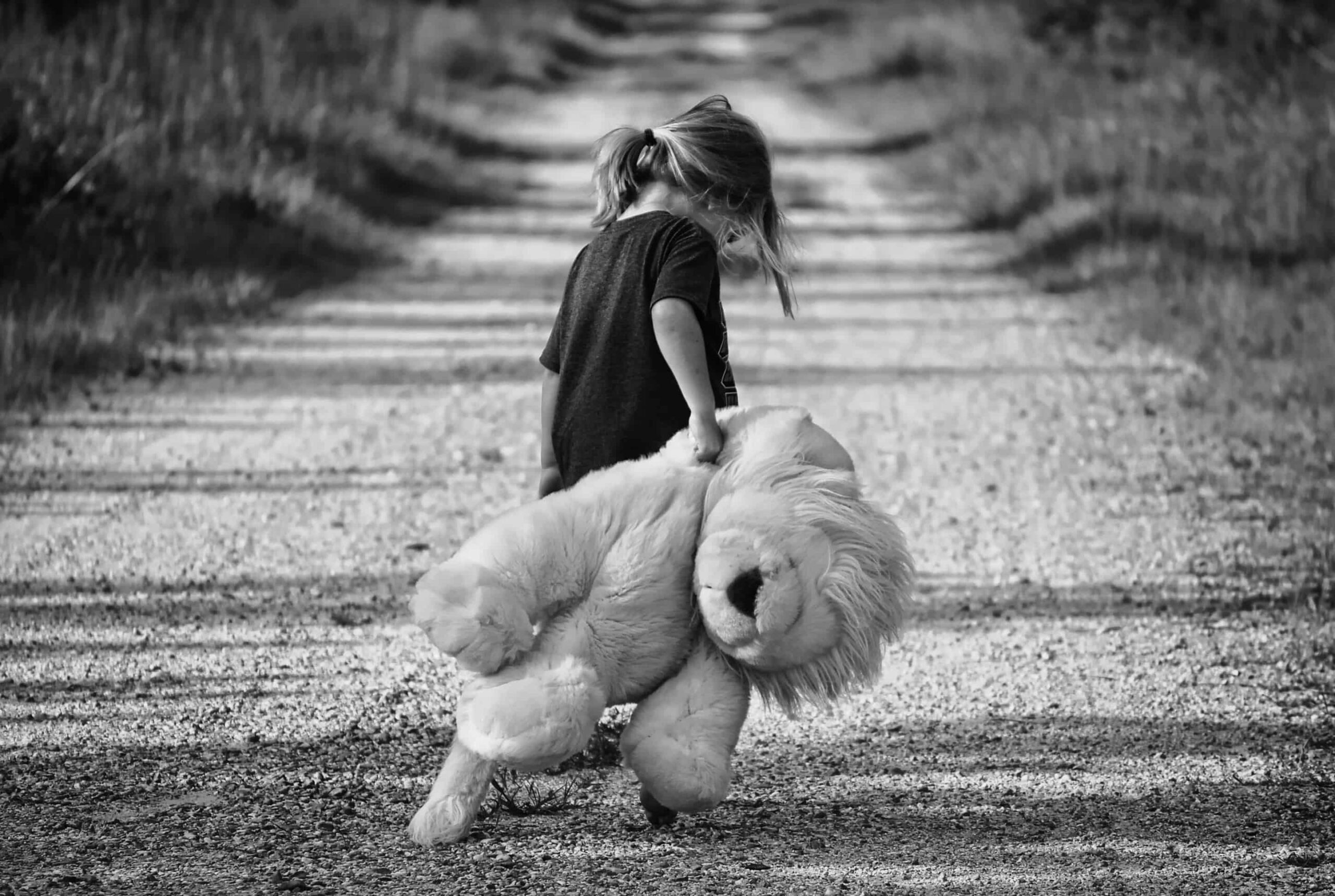Table of Contents
The terrible two age is like a cruel plot twist in your parenthood journey. You’re sailing along, saying to yourself, “I’m pretty good at this parenting thing, aren’t I?” And then around the time your little cherub turns 18 months old, you find yourself in unfamiliar territory. Suddenly, there’s a human-form hurricane ripping through your home, defiantly throwing tantrum after tantrum.
“Was it something I did?” You ask in disbelief. No, it wasn’t.
The age of the terrible twos is just a normal developmental phase that most toddlers go through. It has no bearing on your parenting style. Also, contrary to its infamous label, this period usually begins a few months before year two starts and gradually ends a few months after the third birthday.
What are the terrible twos?
This phase of your child’s development is heralded more by behavior than by age. It’s just called by its unfortunate name because tots descend into this temper tantrum abyss around the time they turn two years old. Generally, this stage spans the years between the ages of one and three.
It’s a frustrating period—the terrible 2s—for both parents and their toddler. You’re bewildered by the sudden change in your tot’s behavior, and are unable to understand the new signals your child is giving. Your two-year-old, on the other hand, is frustrated because they’re experiencing all these new things but they don’t have the ability yet to effectively communicate what they want.
So then, they throw the dreaded temper tantrum: a normal reaction to frustration or anger. On average, toddler tantrums last for about three minutes. During this seemingly endless time, a tot may shout, cry, bite, hit people, and throw things. When he hit his terrible twos, my son liked to either go limp or hold his breath. It was a charming period.

A period of milestones
Just like sleep regression and baby witching hour, the terrible two phase takes place just as your child is going through several mental, physical, social, and emotional changes. This means the tantrums are a normal part of your toddler’s growth and development.
At around the two-year mark, these little ones discover independence. They want to do more things, and they want to do these things alone.
A two-year-old’s favorite word is “no.” When they see that they can’t lift a table by themselves or can’t open the refrigerator, they experience big, new feelings. And because they don’t yet have the capacity and ability to deal with these unfamiliar emotions, they have a meltdown. At their age, this is the only way they know how to cope with challenges. (If it would help, think of them as teenagers in training.)
It’s important to remember that the developmental milestones normally associated with two-year-olds don’t follow a strict schedule. Some children may experience them early; others may go through them after a few months.
Nevertheless, stay alert for signs that the tantrums are more than just a coping mechanism. Consider consulting your pediatrician if your tot’s behavior includes extreme aggression and lasts longer than 15 minutes at a time.
In fact, Laura L. Sisterhen and Paulette Ann W. Wy, authors of a paper published in the National Library of Medicine, suggest seeing a specialist if “[your] child or others are physically injured or [your] child destroys property during the outburst.”

How to deal with terrible twos
Your reaction to your two-year-old’s outbursts is normal. It’s okay to be frustrated, angry, and impatient. The following tips, though, can help you de-escalate emotionally intense situations with your toddler.
Educate yourself about your two-year-old
Understanding where your toddler is coming from can help you react to their tantrum with more love and finesse. We touched on the different milestones your tot may be going through. Remind yourself that any outburst is probably just them coping with the unfamiliarity of growing up.
How about getting to know your tot to help you recognize their unique signs of an impending tantrum? An article written for the Centers for Disease Control and Prevention suggests that you set aside one-on-one time with your toddler. Go for walks, play Follow the Leader, sing nursery rhymes, and read books together.
By intimately knowing your toddler’s personality, you’re more able to adjust your expectations about their behavior. This will then help you react to their tantrums better.
Follow daily routines
Toddlers thrive on routine and structure. They may repeatedly scream, “No,” at bath time, but it’s important to get that tub running despite the chaos. They don’t realize it, but when toddlers know what happens next, it makes them feel emotionally safe.
Consequently, feeling secure helps toddlers feel less anxious, therefore decreasing their tantrums.
So your job is to be a consistent establisher of routine. It may be difficult, given your two-year-old’s newfound desire for independence. Stay the course, though, and maintain your authoritative parenting method. Be firm but loving; communicate positively and leave out the harsh punishment. This is what it takes to set up healthy routines for your toddler.

Reward positive behavior
When my daughter was almost two, she began picking everything off the floor and intentionally putting it in her mouth—food bits, sticks and leaves our dogs brought in, loose thread. She would wait to make eye contact with an adult then would quickly put whatever bit she was holding into her mouth. Then she’d explode into a tantrum when we rushed to take things out of her mouth.
I eventually realized that she might have been doing it for attention. So I gave more attention to her, but not for what she thought would merit it. When she started picking things off the floor, I followed with a bucket and encouraged her to put the things she picked up into the bucket. If she put them in her mouth, I calmly discouraged her with one word. But if she put them in the bucket, I showered her with praise and a hug.
After a couple days, everything she picked up ended up in the bucket, not in her mouth.
An article for UNICEF, based on input from Lucie Cluver, professor of Child and Family Social Work at Oxford University, says, “Rather than punishment and [harping on] what not to do, the positive discipline approach puts an emphasis on developing a healthy relationship with your child and setting expectations around behavior.”
Make noise about the good behavior, not the bad.
Give your toddler control over some things
As teenagers-in-training, toddlers like being in control of their little world. So give it to them, as long as main control stays with you. Present your tot with choices about things that they need to do anyway. If you force them using the traditional method (“Do this now!”), chances are, instead of doing it, they’ll throw a tantrum.
So give them choices.
“Do you want to brush your teeth now or after 10 minutes?”
“Which book do you want to read at bedtime?”
“Do you want to wear the blue coat or the red one?”
“How many pieces of broccoli would you like to eat, five or six?”
This strategy presents you with three benefits. First, your toddler gets to practice their decision-making skills, which is vital even for grown-ups. Second, it gives you an alternative, albeit circuitous, way to make your child do what they need to do; i.e., brush their teeth, read a book, wear a coat when it’s cold, eat their vegetables. And third, you get to pick your battles and avoid a meltdown when your toddler loses said battle.

Distract; redirect
Often, a change of scenery or direction is key to avoiding a tantrum, especially if your toddler is a strong-willed one. Shift their energy toward something more productive. Or, if possible, take them outdoors.
Fresh air and sunlight have been scientifically proven to boost moods. An article published in the National Library of Medicine quotes Russel J. Reiter, a melatonin researcher from the University of Texas Health Science Center: “The light we get from being outside on a summer day can be a thousand times brighter than we’re ever likely to experience indoors.” If you’re aiming for direct sunlight, early morning is best. Midday sun is too harsh.
If going out isn’t possible, simply redirect energies—theirs or yours. Is your toddler insisting on playing with the remote control, thereby accidentally turning the TV on and off? Just take out the batteries and hand the remote back to your tot.
Has your toddler discovered the refrigerator light and has, for the past five minutes, opened and closed the refrigerator door 150 times? Hand them a flashlight or a box turned on its side, allowing them to open and close the box “doors.”
A distracted mind will forget what the tantrum was about in the first place.
The terrible two phase isn’t all bad
Outside of the tantrums, your toddler is an inquisitive, independent, and sweet little one who is going through some major milestones. Focus on that as you deal with this phase in their development. It’s important to get to know who they are so that you can adjust your expectations and discipline methods. If you feel a tantrum coming on, help them make good choices and reward them with praise and affection when they make the right decision. Also, give them distractions to avert a meltdown. Routines are vital, so work those into your daily schedule, as well.
The Age of the Terrible Two isn’t really all that bad if you just think about the little bundle of joy walking around in your house. Certainly, the little, cumulative wins outweigh the meltdowns. Tell us, what’s the recent small win you’ve had raising your toddler?
Like this post? Click the image below to share it on Pinterest -Thank you!












